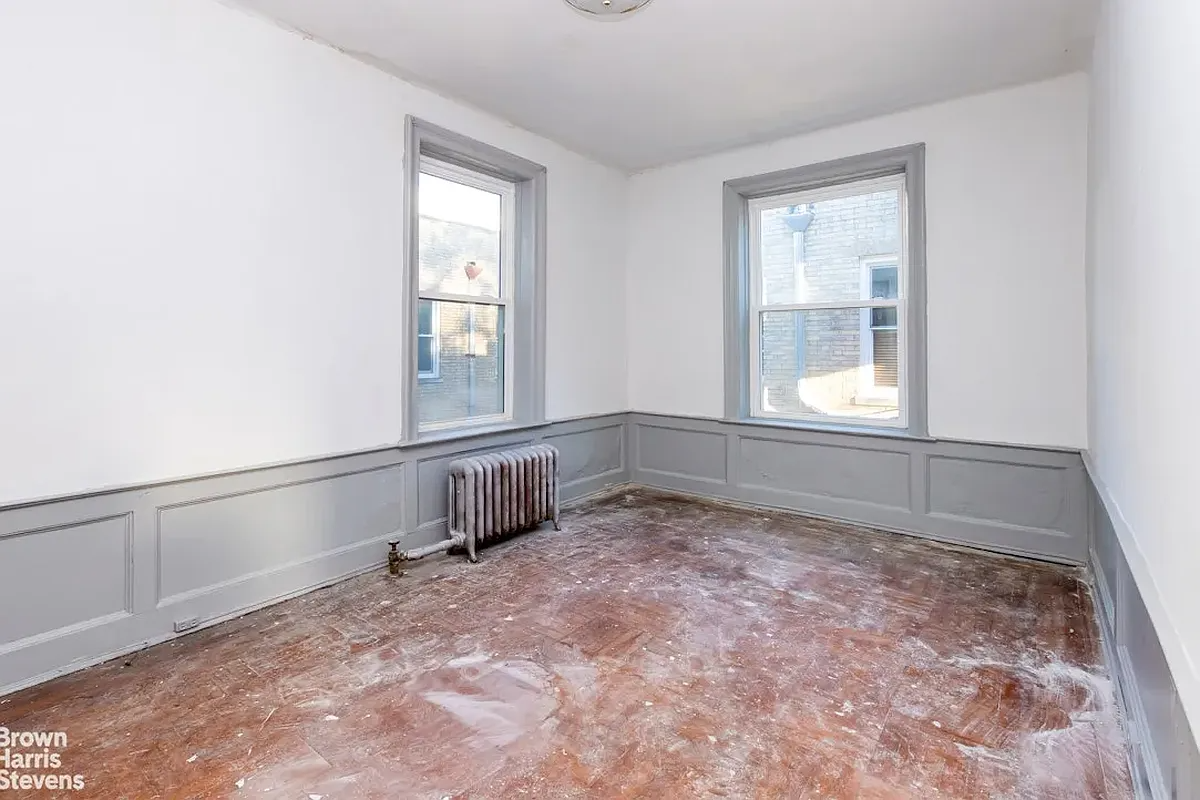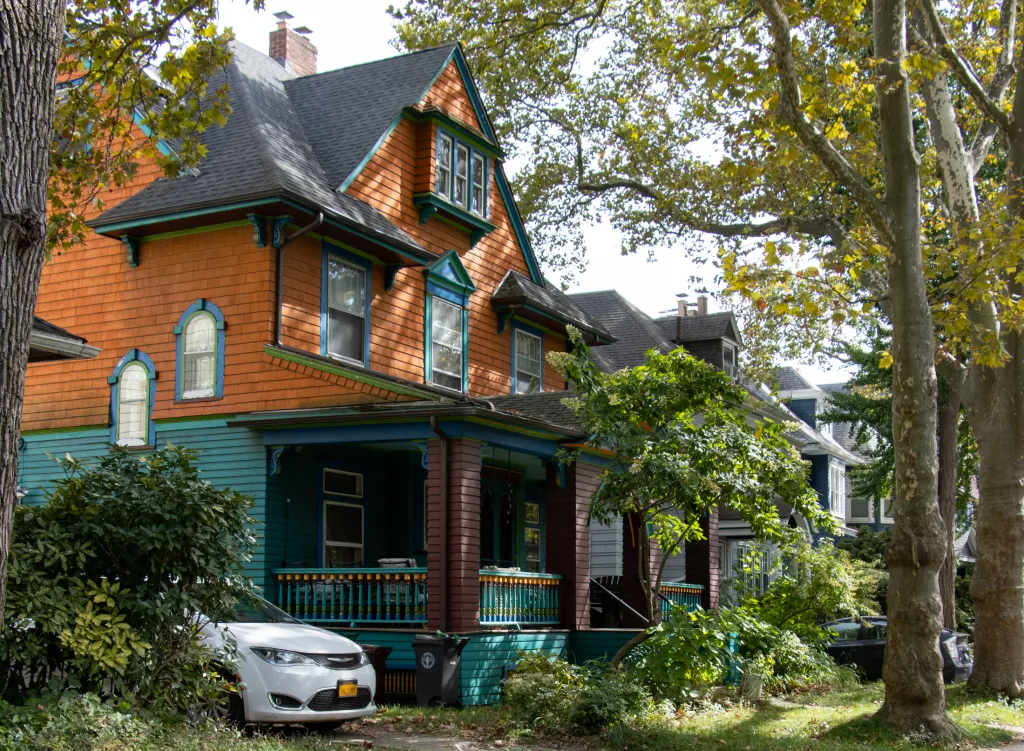'What's Wrong With Gentrification?' Asks New York Mag
This week New York Magazine takes a view on gentrification that is, if not contrarian, at least a little controversial. (The article follows a similar one in the semi-annual magazine n+1). As will come as no surprise to most readers, gentrification these days is treated as something of a dirty word. Why’s that? Mostly because…

 This week New York Magazine takes a view on gentrification that is, if not contrarian, at least a little controversial. (The article follows a similar one in the semi-annual magazine n+1). As will come as no surprise to most readers, gentrification these days is treated as something of a dirty word. Why’s that? Mostly because it conjures up associations of, as n+1 wrote, “the forced displacement of the urban working class by mobile, college-educated professionals.” This may be more myth that fact though: In his recent book There Goes the ‘Hood, Columbia urban planning prof Lance Freeman found that poor residents and those without a college education were actually less likely to move if they resided in gentrifying neighborhoods” and that “the discourse on gentrification has tended to overlook the possibility that some of the neighborhood changes associated with gentrification might be appreciated by the prior residents. In other words, the rehabilitation of an old house or the opening of an upscale bakery isn’t necessarily a zero-sum game in which the long-time residents are lose out. Not only that, claims the New York Magazine article, but gentrification is the only hope that many urban centers have of saving themselves: “The ailing cities that save themselves in the 21st century will do so by following Brooklyn’s blueprint,” the article says in closing. “They’ll gentrify as fast as they can.”
This week New York Magazine takes a view on gentrification that is, if not contrarian, at least a little controversial. (The article follows a similar one in the semi-annual magazine n+1). As will come as no surprise to most readers, gentrification these days is treated as something of a dirty word. Why’s that? Mostly because it conjures up associations of, as n+1 wrote, “the forced displacement of the urban working class by mobile, college-educated professionals.” This may be more myth that fact though: In his recent book There Goes the ‘Hood, Columbia urban planning prof Lance Freeman found that poor residents and those without a college education were actually less likely to move if they resided in gentrifying neighborhoods” and that “the discourse on gentrification has tended to overlook the possibility that some of the neighborhood changes associated with gentrification might be appreciated by the prior residents. In other words, the rehabilitation of an old house or the opening of an upscale bakery isn’t necessarily a zero-sum game in which the long-time residents are lose out. Not only that, claims the New York Magazine article, but gentrification is the only hope that many urban centers have of saving themselves: “The ailing cities that save themselves in the 21st century will do so by following Brooklyn’s blueprint,” the article says in closing. “They’ll gentrify as fast as they can.”
What’s Wrong With Gentrification? [New York Magazine]
Photo by kathyylchan





I grew up in a working class neighborhood in PA–what bxgirl I guess would call a “real” neighborhood–and frankly I see no more value in that than I do in yuppie, gentrified cobble hill where I live now. I like yuppies and am happy to surround myself with them.
“But we also pay taxes and we won’t mug you, so unfortunately the old timers will have to live with us.
Posted by: Jail_Bait at December 15, 2009 12:23 PM”
I love the assumption that no one pays taxes in poor neighborhoods. Poor neighborhoods are not welfare enclaves- they are filled with working poor who- yes- pay taxes as well. As for mugging- well. let’s just say white collar crime is mass mugging at its finest.
Yes life happens and neighborhoods change, but Montrose is right. Neighborhoods and communities are more than the buildings and bricks. You may not want to credit the sociology of city living but it is a very real factor in how cities function, and quality of life for residents. Too many people on brownstoner think its all about the money and real estate, when in fact, its really all about people. And for most of the “old-timers”, it isn’t about gentrification, its about the air of entitlement, and the years of being ignored only to suddenly see improvements happen when “yuppies” move in. And I have heard too many of those complain that if the oldtimers had really cared, the neighborhood wouldn’t be so bad. Wrong and wrong again.
> Free market capitalism is an inadvertant driving force for
> artistic/musical advancement in urban environments.
I’m not sure what your argument is supposed to be, because in every instance, the artists are all forced out of a given area.
Increased cost of living in this city forces more and more emerging artists further and further out from the center, if not to other cities entirely. The end result is a city of museums, not an incubator of new art.
Alternative Argument #23
Free market capitalism is an inadvertant driving force for artistic/musical advancement in urban environments.
-artists/musicians congregate in an area
-people with money move in
-businesses catering to these folks move in
-area becomes gentrified
examples
soho in the 70’s
tribeca in the 80’s
LES in the 90’s
Williamsburg in the 00’s
It seems that such forces seem to play out predictably in racially homogenous areas but run into the socio-ethnic problems in other areas.
Umm…what studies comparing bodegas vs supermarkets vs “foo foo” markets? All supermarkets do not carry un-expired food (I’ve found expired food in Associateds, Key Foods, Garden of Eden so far) and a lot of supermarkets are expensive (hello!) in gentrified and ungentrified communities alike. And…ALL bodegas do not carry expired food and are overpriced. And both bodegas and supermarkets carry unhealty food. Where was there a study done? What was the control? What were the cities involved…I love science, please indulge.
Rob should rent himself out to over-gentrified neighborhoods on Sunday mornings, cadging bites of people’s brunch from sidewalk cafes and ranting about the good old days of scabrous NYC. Then all the brunch-ifiers would feel edgy and authentic and everyone would be happy!
“Now, it seems there is no middle (except, interestingly, in some of Brooklyn’s kosher/orthodox quarters, where something like a middle lives on); no, we must jump from crappy 99-cent stores straight to high-end chains or indie boutiques, and from filthy bodegas to “gourmet” groceries, and from greasy spoons or Dunkin’ Donuts to Asian fusion cuisine. ”
Jackson Heights and Bay Ridge are both places where prices have increased but it is not “gentrified” in the sense of Williamsburg or Carroll Gardens. Partly this may be because artists are not that attracted to the architecture. Jackson Heights is notable for its diversity, which I think is healthy and something to aspire to. It’s diverse in income, class, country of origin, language, and sexual orientation.
To give some examples of people being displaced: There were a number of long-term, Hispanic tenants who paid $1100 or less in my second apartment building in Bushwick. Our (East Indian) landlady raised the rents to $1400 to $1800 and they moved, and now everyone in the building fits the “hipster” profile. One family moved to New Jersey; I don’t know what became of the others.
Mexican immigrants and other Spanish speakers from Central and South America are as new as the hipsters in Bushwick. Those renting single rooms from other Hispanic owners (an earlier wave of Puerto Rican and Dominican immigrants) are not likely to be displaced because the total rents are higher than they could get from hipsters, plus there is a linguistic and cultural barrier for the landlords. Others, whole families, are renting flats, and they are likely to move when the landlord raises the rent or sells the building. Many older immigrants who came here in the 1960s and 1970s are under rent control and they’re not going anywhere. The current mix of stores is my idea of perfection, by the way — you’ve got some really great bargains of all types, from stores specializing in Mexican produce to the Northeast Kingdom restaurant.
The “improving” of Bedford Stuyvesant seems to have happened without any help from whites. It would be wonderful if the area could continue as it is without turning into Fort Greene.
New York City is on the path to being the next Paris: wealthy, aesthetically beautiful, and culturally dull. Unless NYC is excessively-subsidised, there’s not much that can be done. The end.
Hello All,
As a Bed Stuy Resident my entire life I have seen it all from drugs, violence, local businesses come and go, schools closed to make room for luxury condos and now bike lanes ( I love the bike lanes.)
I believe it is necessary, its an evolution. I enjoy the new eateries, I enjoy the bike lanes, I enjoy having a Duane Reade and Rite Aid as well as the corner bodega. Where else can you get a 10:30pm ginger ale run? 🙂
I think the thing that people who have lived in my area think of when they think of gentrification is this:
Why does it take white people to move into the areas that were once called “ghetto, hood and dangerous” to be now called “hip and up and coming” ?
Why is that it takes white people to move into my neighborhood for us to finally get trees planted or a police presence?
They also see white residents only rent to white renters and then they see or don’t choose to see black residents only rent to white renters because they believe the white people in these areas will pay more.
I think the line for ME is this, there needs to be affordable housing for those who can’t afford a 500k luxury studio condo. There needs to be good public schools, good supermarkets and eateries, bike lanes and for ALL of the residents to feel safe and not wait for a certain type of people to move in to do so.